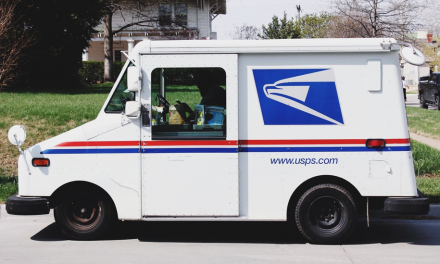
USPS to test repowered gas and diesel delivery trucks
The US Postal Service is continuing to test alternative vehicle technologies to improve the efficiency of its massive delivery fleet, but is now looking into the potential for repowered gasoline and diesel vehicles. Thanks to its independent status, USPS has revealed that it does not face the same requirements on other federal agencies, as ordered by the White House last month, to reach specific alternative fuel targets.
President Obama clarified an executive order to state that all new light duty vehicles leased or purchased after December 2015 must use hybrid, electric, natural gas or biofuels.
The edict stated that the financially troubled US Postal Service would merely have to work with the US Department of Energy on “evaluating the best alternative fuel technologies for the USPS fleet”.
USPS spokesperson Darlene Casey explained to Post&Parcel that because of the “unique mission” of the Postal Service, it is not subject to the executive order, though she said USPS would view the order as “guidance” on sustainability areas outside its current corporate goals.
“The Postal Service will continue to work with the DOE and use this and other Executive Orders for guidance as we determine the best approach to our near and long term fleet strategies,” she said.
Fleet replacement
The USPS delivery fleet – the largest civilian fleet in the world – has about 141,000 custom-built right-hand-drive vehicles, ranging from 16 to 23 years old. Many of these long life vehicles (LLVs) are now approaching the end of an expected 24-year operational lifespan.
However, it is expected to cost $6bn to replace the fleet – “funds we don’t have,” pointed out the spokesperson of the struggling USPS.
With $750m in annual repairs still just about cheaper than replacing vehicles at the moment, it is likely to be another year or two before major fleet upgrades begin, and that replacement would take perhaps five to seven years to complete.
Meanwhile, the testing of new and alternative technologies is continuing. USPS has tried out systems including flex fuel vehicles, electric and hybrids, and although there is Congressional support for electric vehicle technology – not least in Senator Tom Carper’s postal reform bill – at this point the USPS is of the belief that electric vehicle technology is not sufficiently available, affordable or proven.
Postmaster General Pat Donahoe has said the most efficient gasoline engines currently on the market probably represent its best option at the moment, if USPS had the funds to make a fleet replacement.
Repowering
Given the constraints in terms of vehicles that would last 25 years and have right-hand-drive to service domestic mailboxes, repowering the Postal Service’s existing vehicles, rather than purchasing all-new vehicles, is likely to be the cheapest option – saving billions compared to all-new purchases.
This month, USPS awarded two contracts to companies to deliver repowered prototype vehicles.
Virginia-based firm VSE Corporation has been tasked to provide a more fuel efficient gasoline LLV, working with its Pennsylvania subsidiary Wheeler Bros.
And, Illinois company Navistar has been awarded a contract to provide a prototype diesel replacement for the Postal Service LLVs.
VSE, which already refurbishes vehicles for the US Army, said it could provide a “drop-in” engine for USPS vehicles that could double the mileage of the current technology.
“At today’s fuel prices, the avoided cost of fuel and environmental benefits will be tremendous,” said Wheeler Bros CEO Dave Wheeler.
Navistar, which also has US military experience in its history, said diesel powertrains could represent 35% more fuel efficiency than gasoline powertrains, adding claims that lower maintenance requirements and longer service life could bring a “payback” on each vehicle repowering within two years.
“When the USPS current fleet was first put into service, diesel fuel and advanced diesel powertrain technology were not widely available,” said Andrew Dondlinger, vice president, North America operations for Navistar Engine Group. “Now, by replacing its gasoline powertrains, USPS could realize diesel’s benefits of fuel efficiency, long operational life and low service and operating costs.”












